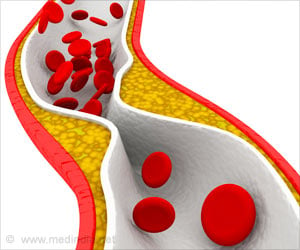Migraine headaches are associated with more than twofold higher chances of the most common kind of stroke.
Migraine headaches have more than double of increased chances of the most common kind of stroke: those occurring when blood supply to the brain is suddenly cut off by the buildup of plaque or a blood clot, researchers at Johns Hopkins have affirmed.
According to calculations from the Johns Hopkins team, presented at the American Heart Association's (AHA) annual Scientific Sessions in Orlando, the risk for those with migraines is 2.3 times more than those without them.For those who experience aura, the sighting of flashing lights, zigzag lines and blurred side vision along with migraines, the risk of so-called ischemic stroke is 2.5 times higher, and in women, 2.9 times as high.
Study participants, mostly in North America and Europe, were between the ages 18 and 70, and none had suffered a stroke prior to enrollment.
Senior study investigator and cardiologist Saman Nazarian, M.D., says the team's latest analysis, believed to be the largest study of its kind on the topic, reinforces the relationship between migraine and stroke while correcting some discrepancies in previous analyses.
"Identifying people at highest risk is crucial to preventing disabling strokes," says Nazarian, an assistant professor at the Johns Hopkins University School of Medicine and its Heart and Vascular Institute.
"Based on this data, physicians should consider addressing stroke risk factors in patients with a history or signs of light flashes and blurry vision associated with severe headaches," the expert added.
Advertisement
Such widespread use of hormone-controlling drugs is what Nazarian says may explain why women with migraines have such high risk of ischemic stroke. Contraceptives and other estrogen therapies are both known to contribute to long-term risk factors for cardiovascular diseases and stroke, such as high blood pressure and increased reactivity by clot-forming blood platelets.
Advertisement
THK













